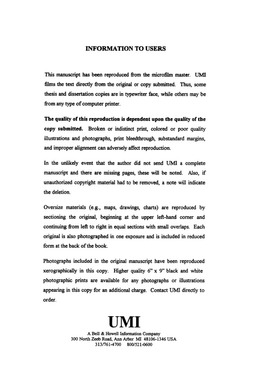| dc.contributor.author | Jung, Dongchul. | en_US |
| dc.date.accessioned | 2013-08-16T12:29:46Z | |
| dc.date.available | 2013-08-16T12:29:46Z | |
| dc.date.issued | 1997 | en_US |
| dc.identifier.uri | https://hdl.handle.net/11244/5495 | |
| dc.description.abstract | This dissertation tests the endogenous growth theories for the developing country (S.Korea) using time series analysis: especially, the role of trade for economic development. To overcome several potential problem of the previous studies, this paper adopts two cointegration tests such as Engle-Granger (1987) test and Johansen (1988) test, applying them to a special form of production function Y = A(X, M)$\cdot$f(K, L), which treats export(X) and import(M) as a kind of production factor. Trade is hypothesized to exert externalities through international knowledge spillover etc. | en_US |
| dc.description.abstract | The last part of this paper re-interprets several previous studies to support the hypothesis of growth slowing-down empirically that can be distinguished in the later stage of export-oriented development strategy. The mathematical proof in this dissertation and the survey of the endogenous growth theories have introduced the possibility of S-shaped path of technology transfers: accelerating and then decelerating. | en_US |
| dc.description.abstract | Major findings of the tests are as following: (1) Dickey-Fuller test and Phillips-Perron test reveal that all the variables are nonstationary I(1) variables. (2) The conclusion from the two cointegration tests is first of all the conclusion that there exists at least one cointegrating vector with which export has played a significant role to produce co-movement of the variables in the national production function. (3) Johansen test also reveals that neither export nor import can be excluded for the cointegration of the production function, and their signs are positive. (4) The other conclusion is drawn from Error Correction Model about the causality between output and trade: both tests admit a bi-directional causality between trade and output. (5) The interaction analysis reveals that the growth rate of total factor productivity is well explained by the growth rates of export and/or import, which statistically justifies the special form of production function used in the above cointegration test. All of these results imply that export and import have exerted some externalities for economic growth which is not explained by the other production factors such as capital and labor in case of Korea as suggested by the endogenous growth theories, and that opening and increasing the international trade can be one of the greatest way for economic development of small developing countries. | en_US |
| dc.format.extent | xiii, 179 leaves : | en_US |
| dc.subject | Korea (South) Economic conditions Econometric models. | en_US |
| dc.subject | Economics, General. | en_US |
| dc.subject | Korea (South) Economic policy Econometric models. | en_US |
| dc.subject | Economic development Econometric models. | en_US |
| dc.subject | Economics, Commerce-Business. | en_US |
| dc.subject | Korea (South) Commerce Econometric models. | en_US |
| dc.title | Endogenous growth and developing countries: Time series analysis of the role of trade with special reference to Korea. | en_US |
| dc.type | Thesis | en_US |
| dc.thesis.degree | Ph.D. | en_US |
| dc.thesis.degreeDiscipline | College of Arts and Sciences | en_US |
| dc.note | Source: Dissertation Abstracts International, Volume: 58-03, Section: A, page: 0997. | en_US |
| ou.identifier | (UMI)AAI9728715 | en_US |
| ou.group | College of Arts and Sciences | |
